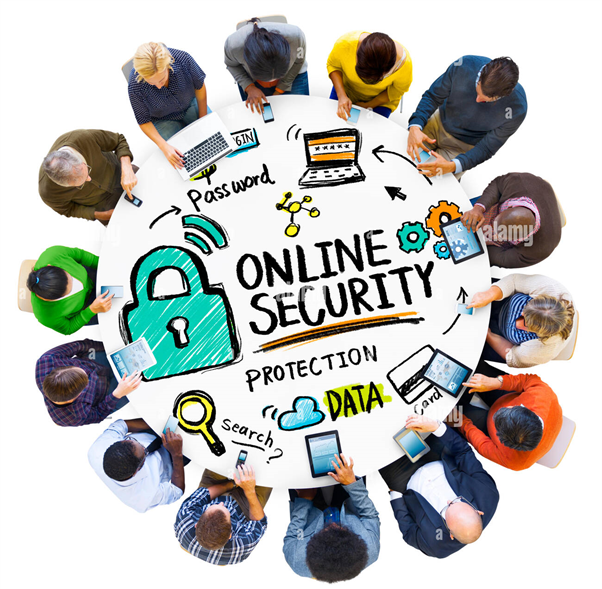Navigating Parenting in the Digital Era: Strategies and Insights
Written on
Understanding Parenting in the Digital Era
In our contemporary society, parenting is constantly adapting to the swift pace of technological progress. The digital era has introduced remarkable opportunities for education, communication, and entertainment, yet it also brings challenges that parents must address to safeguard their children's welfare. This article delves into the intricacies of parenting in a highly connected environment and provides actionable strategies to foster a balanced digital atmosphere for families.
Chapter 1: Grasping the Digital Environment
The digital realm permeates nearly every facet of modern existence, influencing education, social interactions, entertainment, and creativity. Today's children and adolescents are growing up surrounded by smartphones, tablets, and the internet, which have become essential components of their lives. While these technologies can unlock new possibilities, they also introduce risks such as cyberbullying, online addiction, and exposure to unsuitable content.

Recent studies indicate that children typically spend around 7 to 8 hours a day on screens, raising alarms about their physical, emotional, and mental health. It is vital for parents to comprehend the shifting digital landscape, recognizing both its advantages and its potential hazards.
Chapter 2: Achieving Balance in Digital Interaction
While it is impractical and unwise to completely eradicate screen time, establishing a well-rounded digital lifestyle is essential. Parents can adopt proactive measures to regulate their children's online time and ensure it remains constructive.
- Establishing Clear Guidelines: Set rules regarding screen time limitations, particularly during meals, study hours, and family gatherings. Research indicates that structured routines promote healthier digital habits among children.
- Encouraging Offline Pursuits: Support hobbies, sports, reading, and outdoor activities to offer a variety of experiences beyond technology, which contribute to physical, emotional, and cognitive growth.
- Modeling Behavior: Children often imitate their parents’ actions. By prioritizing screen-free family moments and minimizing their own digital distractions, parents can set a positive example.
Chapter 3: Ensuring Online Safety
The internet is expansive and, while serving as a valuable educational tool, it also exposes children to various dangers such as cyberbullying, predators, and inappropriate material.

- Teaching Internet Safety: Instruct children on how to maintain their safety online by avoiding oversharing personal details, recognizing suspicious behavior, and being aware of their digital footprint.
- Utilizing Parental Controls: Many applications and devices provide parental control features that enable parents to filter content and monitor online activities, effectively shielding younger users from harmful material.
- Fostering Open Dialogue: Cultivate an atmosphere where children feel safe discussing their online experiences. They should feel comfortable approaching you about anything unsettling, without fear of repercussions.
Chapter 4: The Influence of Social Media
Social media significantly affects teenagers, shaping their self-image, identity, and social interactions. While it can be a useful tool for connection, it can also foster anxiety, peer pressure, and a distorted perception of reality.

- Monitoring Social Media Engagement: Stay informed about the platforms your children frequent, ensuring their profiles are secure and private. Regular discussions about their online interactions can emphasize the importance of respectful communication.
- Encouraging Critical Thinking: Teach children to critically evaluate the authenticity of online content, from curated social media posts to misleading news. This promotes a healthier relationship with social media and mitigates feelings of inadequacy.
Chapter 5: Technology's Role in Education
Digital resources have revolutionized education, with children increasingly leveraging devices for learning. While this advancement is beneficial, parents must be cautious about balancing educational and entertainment purposes.

- Utilizing Educational Resources: Numerous apps and websites encourage creativity, critical thinking, and problem-solving. Promote the use of these educational tools to ensure screen time is productive.
- Supervised Online Learning: Engage with your child's online learning journey by assisting with assignments, tracking their progress, and discussing their educational experiences.
Conclusion
Parenting in the digital age demands vigilance, open communication, and a dedication to balancing screen time with offline activities. By setting boundaries, fostering dialogue, and educating children on digital safety, parents can create a supportive environment that harnesses the advantages of technology while shielding children from its risks.
The ultimate aim is to equip children with the skills necessary to responsibly navigate the digital landscape, ensuring they enjoy its benefits while remaining safe and well-adjusted individuals. If you found this article insightful, please consider leaving feedback or showing support for my work. For those interested in offering a contribution, I have a donation account set up [HERE]. Thank you for your support!
You can visit my Amazon author profile page [here].